Nokia Lumia 630 Review
by Brett Howse on July 22, 2014 8:00 AM EST- Posted in
- Smartphones
- Microsoft
- Nokia
- Mobile
- windows phone
Camera
Budget phones often have budget cameras, and the Lumia 630 is no exception. The camera module is a 5 MP 1/4” design. This means the pixels are 1.4 µm. It is an autofocus design, but lacks any sort of flash assist. I don’t really like the flash of most smartphones anyway, since the LED often isn’t bright enough to really illuminate the scene, and instead blows out the color accuracy of whatever you are trying to capture. However when you are working with a device with a 1/4” sensor, you are going to need a flash for any sort of low light photography so it’s absence is certainly missed here. I also quite often use the LED flash as a flashlight, so it was doubly missed.
To measure camera performance, we’ll put it through several test scenes and compare it to other devices. We’ll start with the ISO 12233 test chart, and look specifically at the sagittal and tangential lines to see how well the camera can capture fine detail.
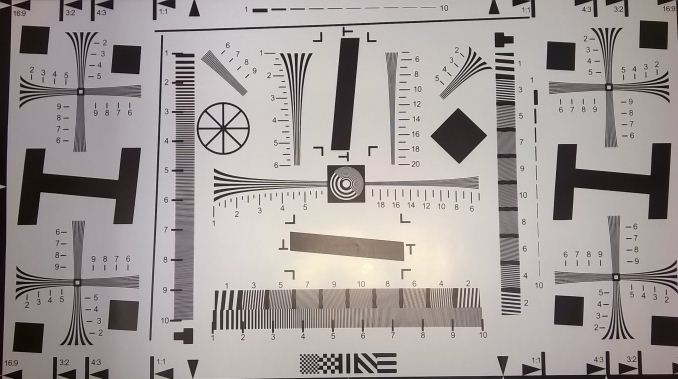 ISO 12233 Test Chart captured by Nokia Lumia 630
ISO 12233 Test Chart captured by Nokia Lumia 630
The Lumia 630, unsurprisingly, does a poor job of resolving fine detail. 5 MP isn’t a lot to work with, and with such a small sensor size it really struggles to capture enough light. The gallery below will allow you to compare it to other devices.
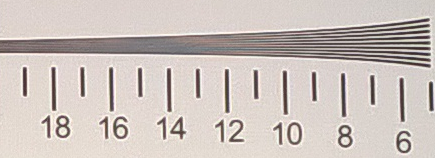
Once cropped, we can really see the shortcomings of the camera system. A common theme that I found while using the phone is that it does a reasonable job capturing a scene, but any sort of cropping of the scene later will result in an unusable image.
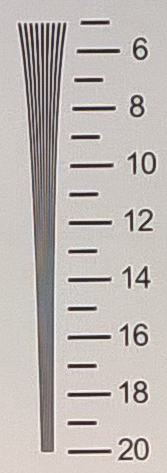
The story is the same for the tangential crop. Once zoomed in, all detail is lost. The only good news is that the 630 appears to use the same camera module as the 520 and 620, so there shouldn’t be a regression here from last year’s models.
Lab Scenes
To get a feel for how the Lumia 630 can shoot pictures under a controlled environment, we have the following sample photos comparing it to the Lumia 1020. I also included the high resolution photos from the 1020 just to see how it does pixel binning to improve the image quality of the low resolution shots. These shots were all taken with the cameras set to their default automatic modes, and the Lumia 630 defaults to 16:9 where as the Lumia 1020 defaults to 4:3 photos.
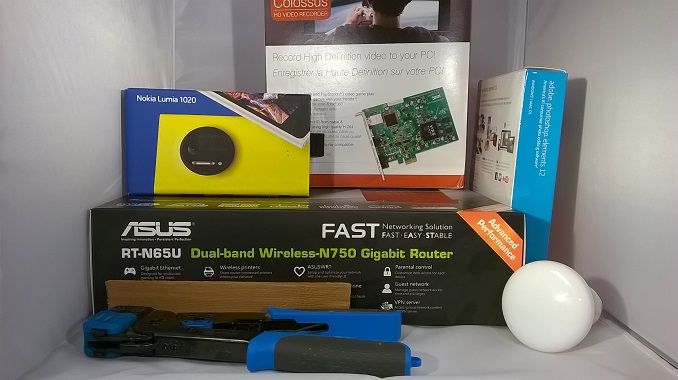
In the well lit controlled photos, the Lumia 630 does very well. It has good white balance, and the detail is actually pretty good. The white balance is better than the Lumia 1020 in this case, which historically has struggled with white balance in certain scenarios. Next up, we'll test both in a low light controlled scenario. You can use the gallery below to sample full resolution images from this test.
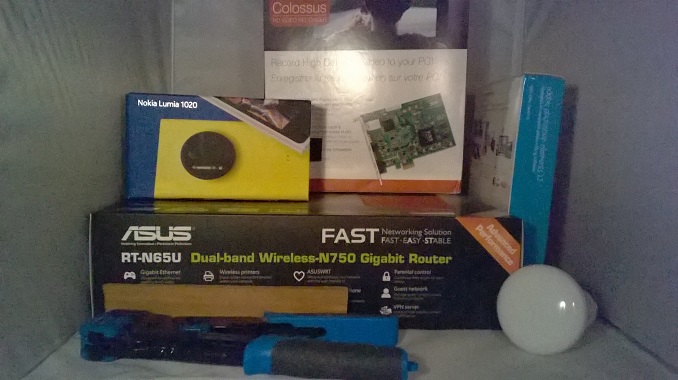
For the low light shots, the ambient light is dropped to 5 lux. Unsurprisingly, with such a small sensor size the Lumia 630 really struggles to capture enough light to properly portray the scene. The picture has a lot of noise in it. This is why a flash is so important on a phone such as this, as it makes shooting any sort of dim scene very difficult. LED flashes often blow out the shot, but at least they make the shot possible. The Lumia 1020, with its 1/1.5" sensor absolutely trounces the 630 in this test. I also included the high resolution shots for the 1020 in this test just to see the pixel binning in action. The high resolution shot actually comes across with slightly less pop than the low resolution image, even though both are very good. It's especially noticeable on the white text on the router box. You can use the gallery below to sample full resolution images from this test.
Outdoor Scenes (Night)
Moving away from controlled scenes to outdoor scenes, we can see how the Lumia 630 fares under real world conditions. First up, we’ll check out its low light performance with a picture of a park bench, lit by a nearby path light.

Going into the review, my assumption was that the newer ISP of the Snapdragon 400 SoC would result in slightly better shots than the outgoing 620, but that wasn’t the case. Both devices struggled with the low light shots, but the 620 was able to achieve a better focus lock before taking a picture. The 630 did take pictures faster, but the results aren’t great in low light.

Next up is the picture of a Supermarket sign at night. Here we see similar results, with the Lumia 620 having a better white balance and better overall shot than the 620. The 620 actually has better white balance than even the Lumia 1020 in this comparison, even though the 1020 has a clearer result.
Outdoor Scenes (Daylight)
For the daylight pictures, the story changed. With enough light, the Lumia 630 can take some excellent pictures. It did have a tendency to oversaturate the images slightly, but generally the pictures were quite good.

This photo gives a good example of the oversaturation, with the Lumia 630 coming in a bit too dark for the building. The Lumia 620 undersaturated the image a bit here.
This crop compares all three photos of the flower, and demonstrates that even with sufficient light, once you zoom in on a photo with the Lumia 630, it results in a blurry image much like the Lumia 620. Overall, for daylight shots, the Lumia 630 actually does surprisingly well assuming you don’t want to zoom in on the results. Some of the pictures were oversaturated, but generally the white balance was good, and brightness and detail were both ok for a 5 MP result.
Capture Latency
The arrival of a new ISP has really helped with the speed of the camera. Both focus latency and shot latency are very good, and generally much improved over the prior generation of devices. There are no fancy rangefinders, so we’re not going to break any records, but it’s still a good result.
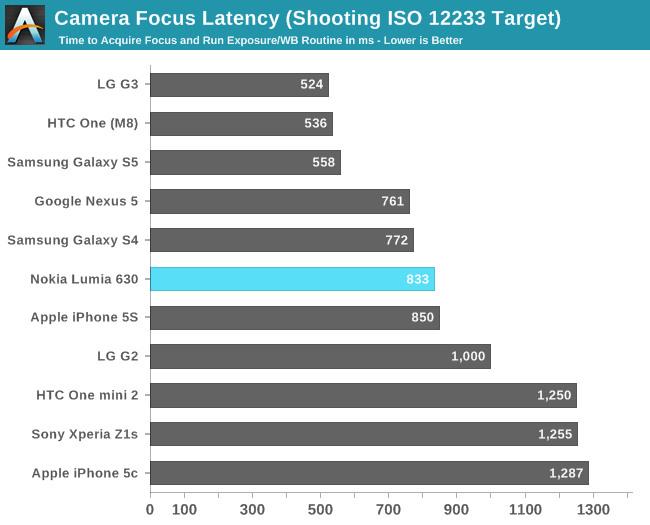
With a 833 ms focus capture, you can grab focus pretty quickly. While not up there with today’s flagship devices where focus latency seems to be a competition, it still comes in better than other devices costing much more.
Once you have focus lock, the next step is of course to take the photograph, and for that we analyze the time in between each capture.
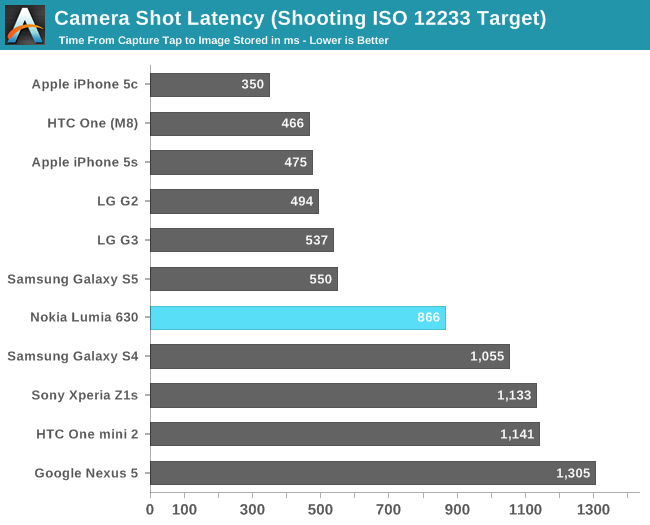
The camera latency is slightly longer than most of today’s flagship devices but it still comes in at a reasonable 866 ms. For a device at this price point, that’s a good result.
For total Camera Latency, we add the previous numbers together and compare total time to capture an image.
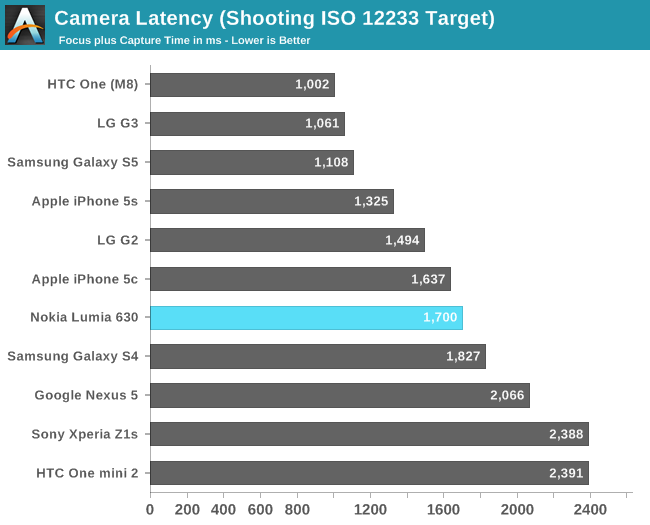
With an average focus lock and an average capture time, the Lumia 630 falls in to the middle of the pack, which is a good result for a device in this price range.
Video
The Lumia 630 is limited in what it can shoot for video. There are no options to change the resolution or frame rate at all on this device, so you are stuck with 720p30 video. With such a small sensor both in terms of size and pixels, this is probably all you can expect from the device even though the ISP can handle 1080p video.
The video quality is not exceptional, with a lot of detail missing. Being a $160 phone, it of course lacks any sort of optical image stabilization.


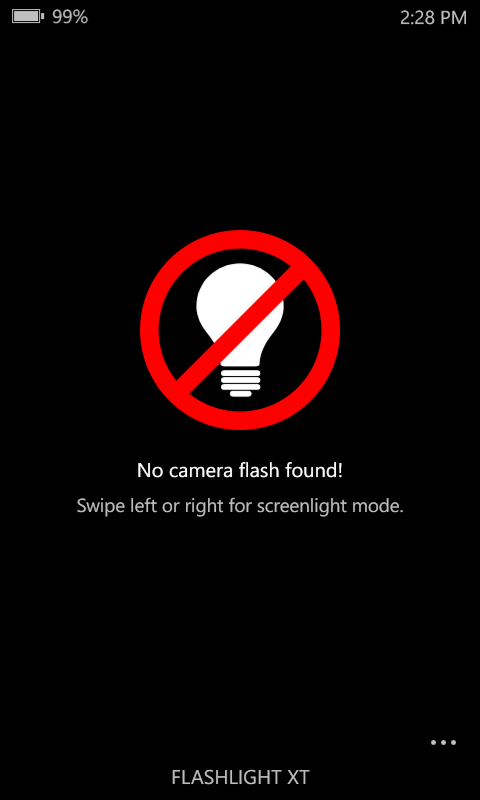































































83 Comments
View All Comments
cashnmillions - Tuesday, July 22, 2014 - link
I have the 635 after having an HTC DNA and then a Google Nexus 5. So far the phone has grown on me, there are definitely fewer features than some of those Android phones. Win Phone 8.1 takes a bit getting used to. It is simple though and runs pretty smooth. The thing I probably like the most is the size and feel of the phone when you hold it. I will probably switch back to android though in the next year and probably will get a compact or mini version of one of the bigger phones like the Xperia Z1 or S5.Alexvrb - Tuesday, July 22, 2014 - link
A lot of the mini versions are gimped in terms of specs. Sony is usually better about that than most. Nokia has some good small phones that are higher end than the 6xx series. There's also talk of a 1520 V (smaller version) that might be good those those looking for something compact. Personally I'd be more interested in the 1820.kyuu - Tuesday, July 22, 2014 - link
Thanks for the review, Brett. It's great to see real Windows Phone coverage return to Ars. I only wish there were some flagship phones to review. Newest one is the Lumia 930, and that's not even available in the US market.Oh how I wish they'd release a successor to the 1020. Hell, they could use the exact same camera module and it'd still be a winner. Just modernize the rest of the phone and address the 1020's chief shortcomings (white balance problems and lack of mSD).
Gunbuster - Tuesday, July 22, 2014 - link
The really bizarre thing is they have done a ton of marketing for the 1020 in the past few weeks. It's like no one told them the phone has been out for over 6 months and is soon to be discontinued...skiboysteve - Tuesday, July 22, 2014 - link
return to ars?kyuu - Wednesday, July 23, 2014 - link
Yes...? Unless my memory is completely out of whack (which isn't a possibility I ever discount), Ars hasn't had any real reviews of Windows Phone hardware/software since the initial review of WP8 and the HTC 8X. Note that pipeline articles don't fall under my definition of "real reviews".noblemo - Wednesday, July 23, 2014 - link
This is AnandTech.hahmed330 - Tuesday, July 22, 2014 - link
This is a downgrade from nearly every aspect... Rather cough up 20$ extra buy a Moto G and not be this cheap... Only thing good I can say is well great reviewVengenceIsMine - Tuesday, July 22, 2014 - link
In spite of the #, this isn't really a sequel to the 620, significantly lower price point. If this thing was at $150 or better $129 then it's a solid phone for the $ but it's currently overpriced. I expect it to drop soon much like the 520 did, that thing came out at $129 but was under $99 within 3 months of release practically everywhere & often below that.512mb is definitely the weak point in this phone, kind of unforgivable and short sighted, hopefully now that MS has control they will but a stop to the 512 mb madness. Screen res is ok and performance is actually pretty good for the price point and Lumias are generally pretty well built vs competition in these cheaper market segments.
Microsoft has to wake up and stop paying $ for Qualcomm in this market segment & get onboard with a cheaper SOC like MediaTek and spend the $ on ambient light sensor and extra RAM.
jimjamjamie - Tuesday, July 22, 2014 - link
I thought the 630 was a pretty conservative configuration for Nokisoft. If you compare it to the Nokia X2, the X2 beats it soundly and for a better price. Funnily enough it's only for select markets.